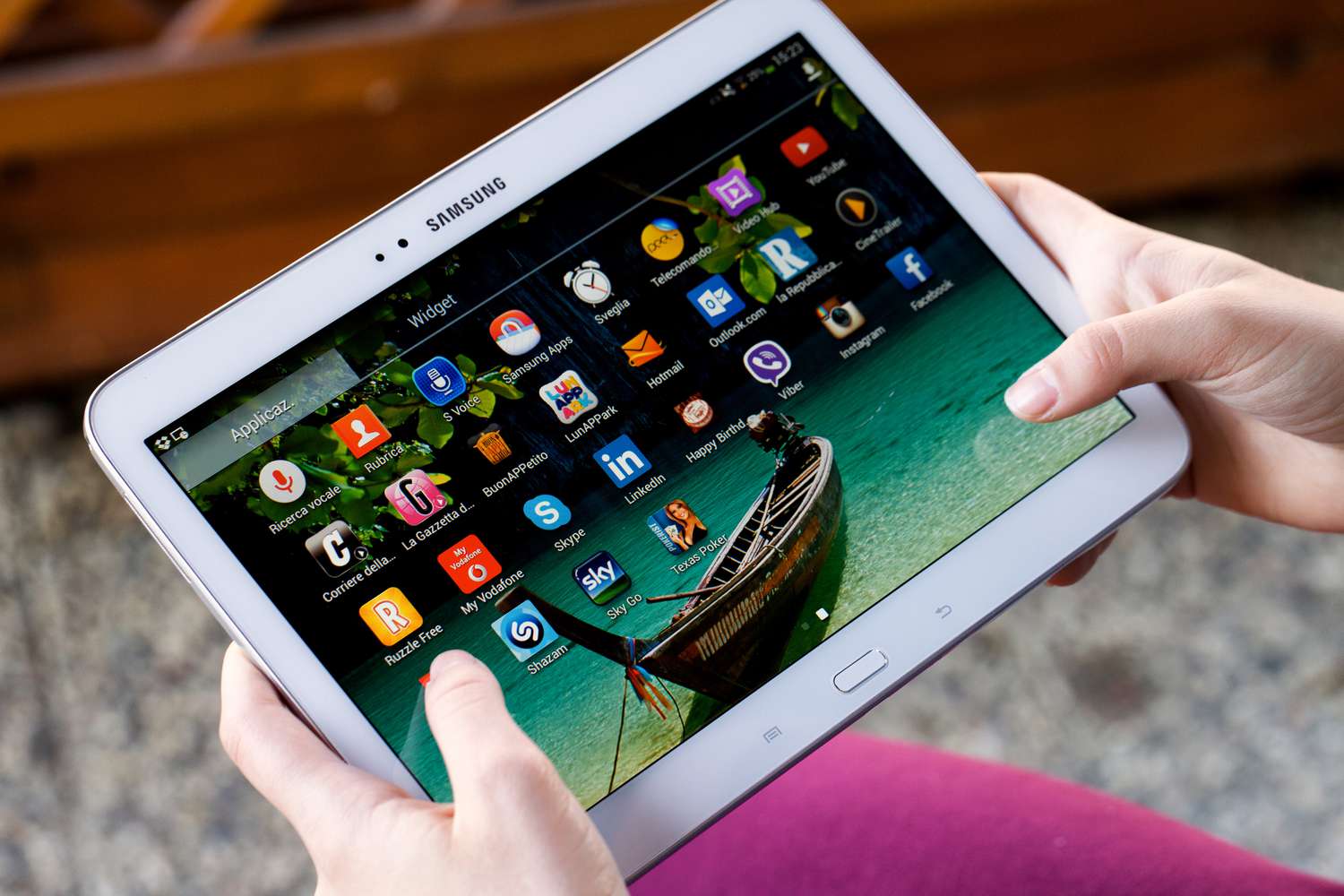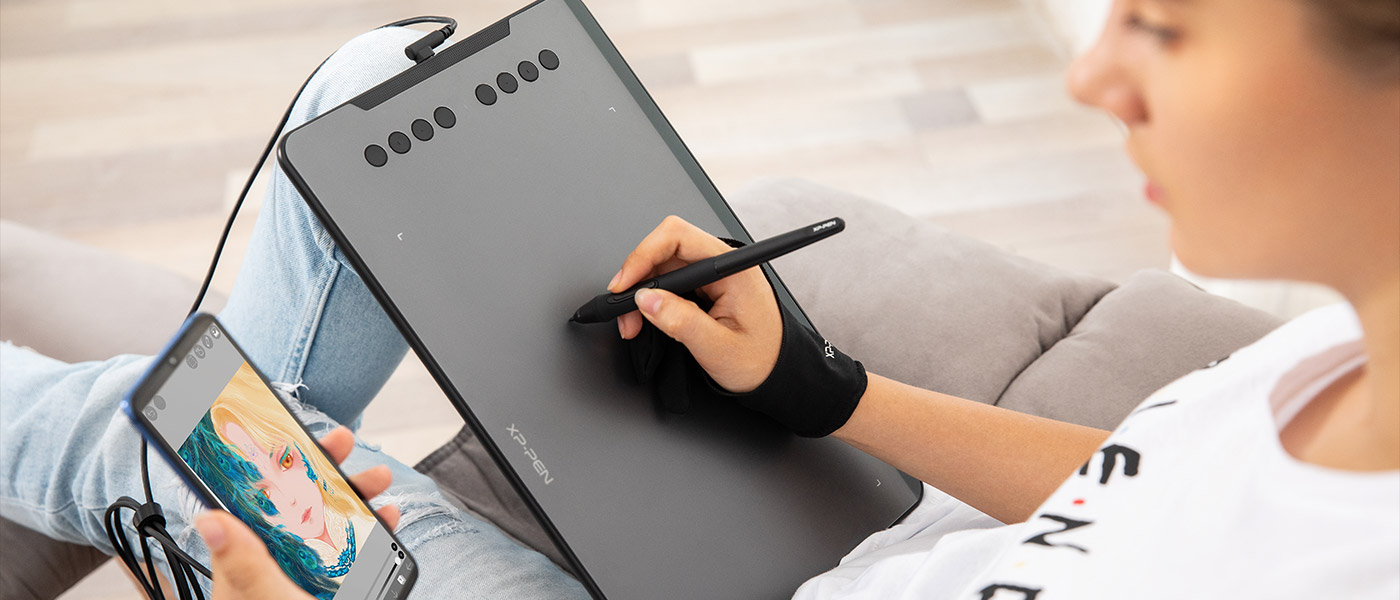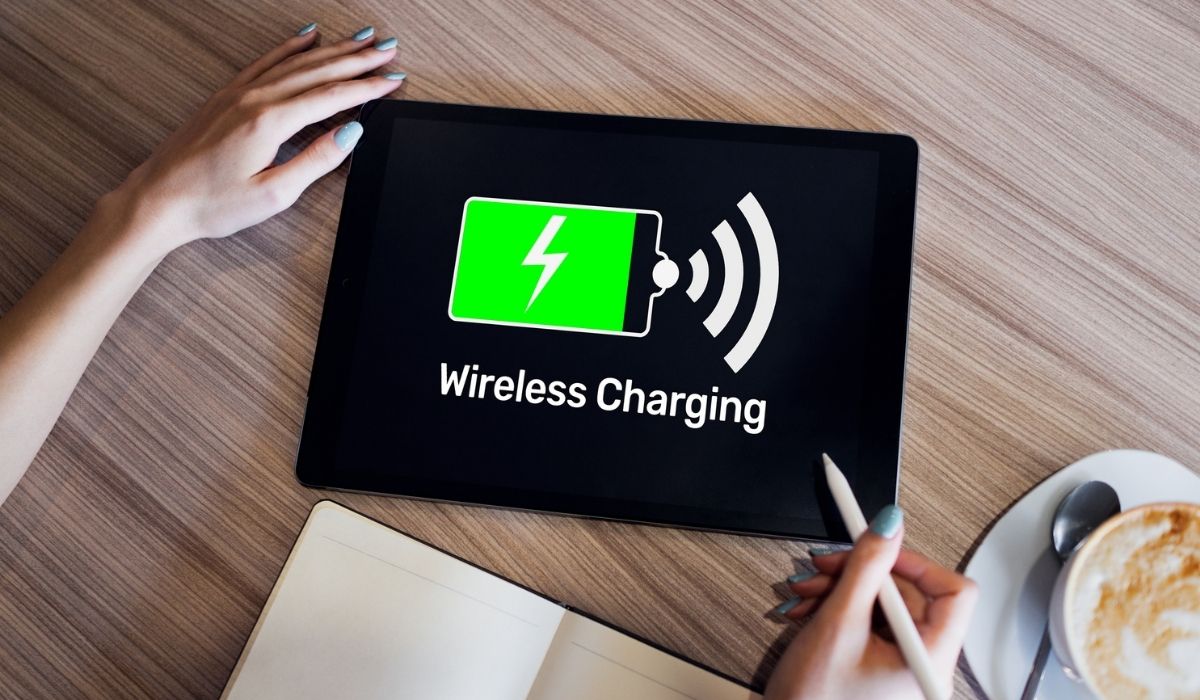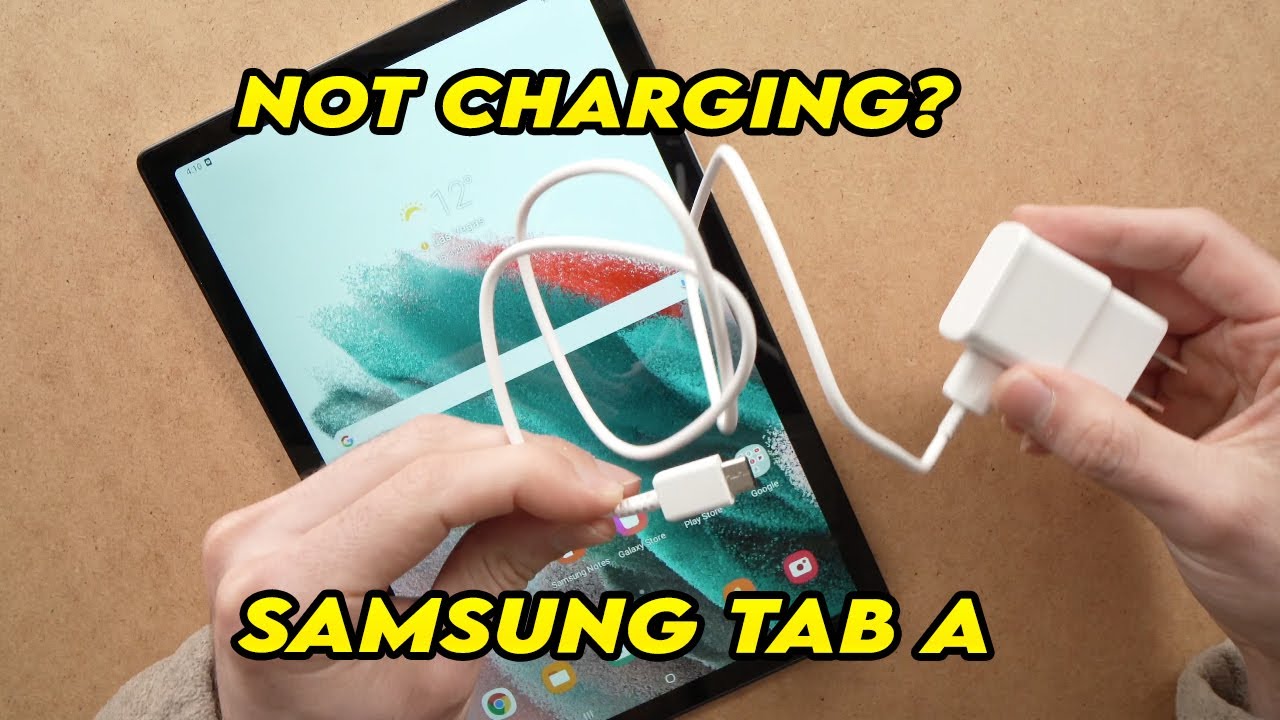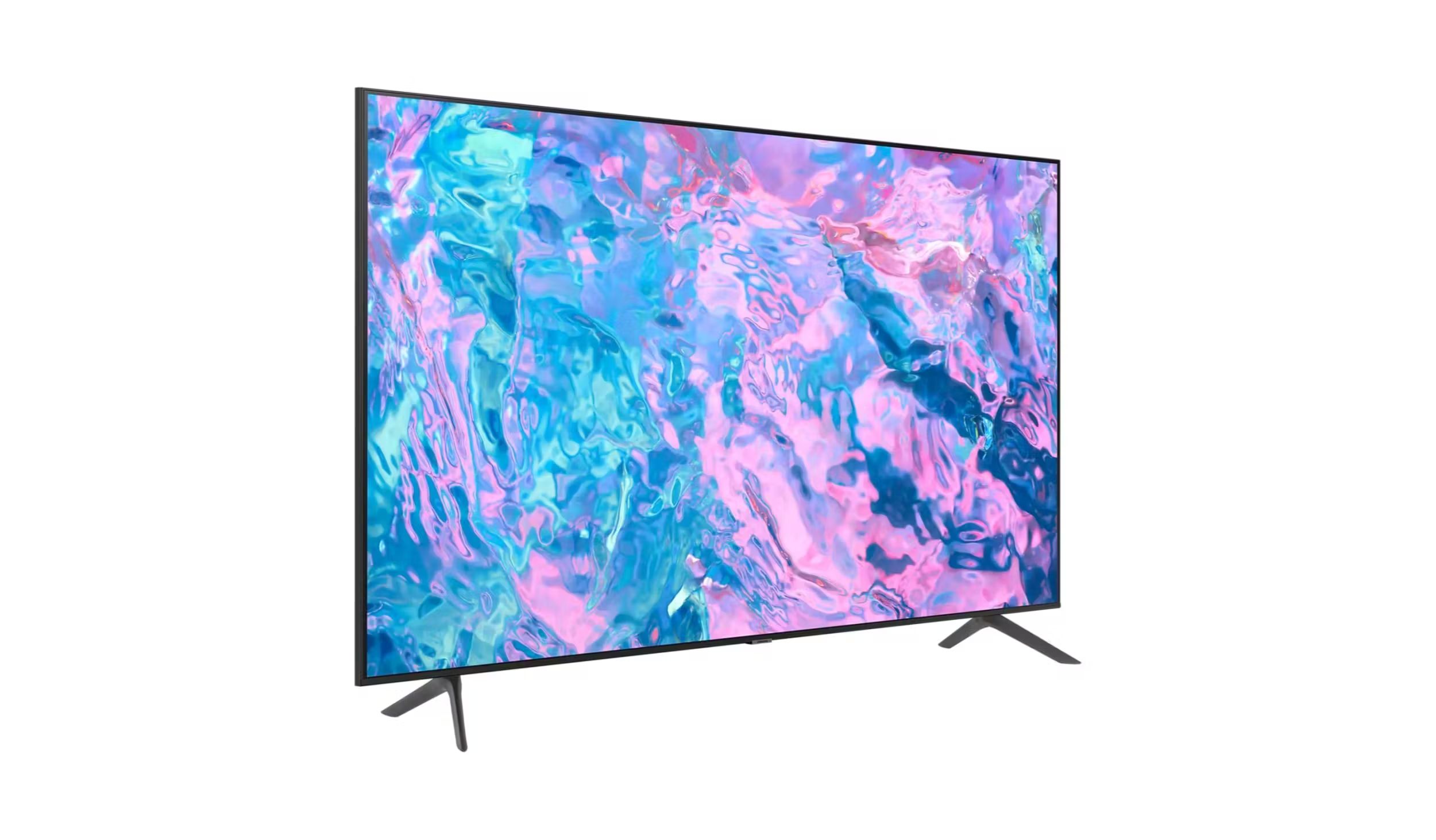Introduction
Calibrating the screen of your Samsung tablet is crucial for ensuring optimal display performance. A well-calibrated screen can enhance your overall viewing experience, making colors more vibrant, text sharper, and images more true-to-life. Whether you’re using your tablet for work or entertainment, a properly calibrated screen can make a significant difference.
When you purchase a new Samsung tablet, the screen is typically pre-set to a default calibration. However, this default setting may not meet your specific preferences or requirements. Factors such as ambient lighting, personal preference, and the type of content you consume can all impact how you perceive the display.
Fortunately, Samsung tablets come with built-in screen calibration options, allowing you to adjust the display settings to suit your needs. By following a few simple steps, you can fine-tune the colors, brightness, and contrast on your tablet screen, resulting in a more visually pleasing and comfortable experience.
This guide will walk you through the process of calibrating the screen on your Samsung tablet. Whether you’re looking to enhance the clarity of text, improve color accuracy, or make adjustments for better visibility in different lighting conditions, our step-by-step instructions will help you achieve the desired results.
By taking the time to calibrate your Samsung tablet screen, you can maximize its potential and enjoy a more immersive and satisfying user experience. So, let’s dive in and explore the steps involved in calibrating your Samsung tablet screen.
Why Calibrate Your Samsung Tablet Screen
Calibrating your Samsung tablet screen offers several advantages that can greatly enhance your overall user experience. Here are a few reasons why it’s beneficial to calibrate your tablet screen:
- Improved Color Accuracy: Calibrating your tablet screen allows you to achieve more accurate and realistic colors. This is especially important if you use your tablet for tasks such as photo editing or graphic design, where color accuracy is crucial.
- Enhanced Text Clarity: By calibrating your screen, you can improve the sharpness and clarity of text, making it easier to read and reducing eye strain. This is particularly important for tasks like reading e-books, browsing the web, or working on documents.
- Optimal Brightness and Contrast: Proper screen calibration ensures that your tablet’s brightness and contrast settings are optimized for your viewing environment. This means that the screen will be comfortable to view in both dimly lit and brightly lit conditions.
- Better Viewing Experience: Calibrating your tablet screen can greatly enhance your overall viewing experience, whether you’re watching movies, playing games, or simply browsing through photos. Colors will appear more vibrant, details will be clearer, and the overall visual quality will be significantly improved.
- Personal Preference: Each individual has their own visual preferences. Calibrating your tablet screen allows you to customize the display settings to align with your personal preferences, ensuring that the tablet screen looks exactly how you want it to.
- Consistency Across Devices: If you own multiple Samsung devices, such as a tablet and a smartphone, calibrating the screens ensures a consistent visual experience across all your devices. This is especially helpful if you often switch between devices for various tasks.
Overall, calibrating your Samsung tablet screen is a simple yet effective way to optimize the display and tailor it to your specific needs. Whether you require accurate color reproduction, better text clarity, or an overall improved viewing experience, taking the time to calibrate your tablet screen will undoubtedly enhance the way you interact with your device.
Step 1: Access the Settings Menu
In order to calibrate the screen on your Samsung tablet, you’ll need to access the device’s settings menu. Here’s how to do it:
- Start by unlocking your tablet and navigating to the home screen.
- Look for the “Settings” app on your home screen or in the app drawer. It is typically represented by a gear icon.
- Tap on the “Settings” app to open it and access the main settings menu.
- Scroll through the settings menu to find the “Display” option. On some Samsung tablets, it may be labeled as “Screen” or “Display & brightness.”
- Tap on the “Display” option to access the display settings.
By following these simple steps, you will be able to access the settings menu of your Samsung tablet and proceed to the next step of the calibration process. Remember that the location and labeling of the settings may vary slightly depending on the model of your tablet and the version of the operating system it is running.
Once you have successfully accessed the settings menu, you’re ready to move on to the next step of calibrating your Samsung tablet screen.
Step 2: Navigate to Display Settings
After accessing the settings menu on your Samsung tablet, the next step in calibrating the screen is to navigate to the display settings. Follow these instructions:
- Within the settings menu, look for the “Display” or “Screen” option and tap on it.
- You will be presented with a range of display settings and options. These may include brightness, wallpaper, font size, and screen timeout, among others.
- Scroll through the display settings until you find the option for “Screen Calibration” or “Screen Mode.” Tap on it to proceed.
On some Samsung devices, the screen calibration option may be located within the “Advanced” or “Additional settings” section of the display settings menu. If you don’t immediately see the screen calibration option, try exploring other sections of the settings menu to locate it.
It is important to note that the specific labeling and location of the display settings may vary depending on the model and software version of your Samsung tablet. However, it is typically easy to find and navigate to the screen calibration options within the display settings menu.
Once you have successfully navigated to the display settings, you are ready to proceed to the next step in calibrating your Samsung tablet screen.
Step 3: Tap on Screen Calibration
Now that you have accessed the display settings menu on your Samsung tablet, it’s time to tap on the screen calibration option. Follow these simple steps:
- Within the display settings menu, look for the option labeled “Screen Calibration” or “Screen Mode.” Tap on it to proceed to the screen calibration settings.
- Upon tapping on the screen calibration option, you may be presented with different preset display modes, such as “Vivid,” “Natural,” or “Basic.” These modes adjust the color saturation and overall display appearance.
- If you prefer a more accurate color representation, select the “Natural” or “Basic” mode. These settings aim to provide a more true-to-life color experience.
- Alternatively, if you prefer more vibrant and vivid colors, select the “Vivid” mode. Keep in mind that this mode may increase color saturation significantly.
It’s important to explore these different screen calibration options and choose the one that best suits your preferences and needs. You can always go back and adjust the settings later if you decide to make changes.
Remember that the available screen calibration options may vary depending on the model and software version of your Samsung tablet. Some devices may offer more advanced calibration settings, allowing you to fine-tune brightness, contrast, and other display parameters. If you have access to such settings, take your time to experiment and find the optimal configurations for your tablet screen.
By tapping on the screen calibration option and selecting your preferred display mode, you are ready to move on to the next step in calibrating your Samsung tablet screen.
Step 4: Follow the On-Screen Instructions
Once you have selected the desired screen calibration option on your Samsung tablet, you may be prompted with on-screen instructions or a calibration wizard. Follow these instructions to proceed with the calibration process:
- Carefully read the on-screen instructions that appear after selecting the screen calibration option. These instructions will guide you through the steps necessary to calibrate your tablet screen.
- You may be asked to adjust specific display settings such as brightness, contrast, or color temperature. Follow the instructions provided to make the necessary adjustments.
- Pay attention to any visual cues or reference images provided on the screen. These will help you determine the optimal settings for your tablet’s display.
- If there are no on-screen instructions or visuals, simply review the changes made by the selected screen calibration option. Take note of any noticeable improvements or changes in color, contrast, or brightness.
It’s important to follow the on-screen instructions carefully to ensure accurate calibration of your tablet screen. The calibration process may vary depending on the model and software version of your Samsung tablet, so be sure to read and understand the instructions specific to your device.
If you encounter any difficulties or are unsure about any of the on-screen instructions, consult the user manual or the Samsung support website for more information. Additionally, there may be online resources or forums where you can find tips and tricks from other Samsung tablet users who have calibrated their screens.
By following the on-screen instructions, you will be able to make the necessary adjustments and complete the calibration process for your Samsung tablet screen.
Step 5: Test and Adjust as Needed
After completing the initial screen calibration on your Samsung tablet, it’s time to test the changes and make any necessary adjustments. Follow these steps to ensure that your tablet screen is calibrated to your satisfaction:
- Exit the settings menu and navigate to various applications or content on your tablet that utilize different colors and visual elements.
- Observe the colors, contrast, and overall display quality in different scenarios and lighting conditions. Pay attention to any improvements or discrepancies in the screen’s performance.
- If you find that certain colors appear too saturated or washed out, return to the screen calibration settings and make adjustments accordingly.
- Experiment with different settings and modes to find the combination that best suits your preferences. You may need to repeat the calibration process and fine-tune the settings multiple times to achieve your desired results.
It’s important to take the time to properly test and adjust your Samsung tablet screen calibration. Everyone’s visual preferences differ, and the ideal settings for one person may not be the same for another.
Keep in mind that the environment in which you use your tablet can also affect your perception of the screen’s performance. Factors such as lighting conditions and viewing angles can impact how colors appear on the display.
By testing the screen in various scenarios and making adjustments as needed, you can ensure that your Samsung tablet screen is calibrated to provide the best possible viewing experience for your specific preferences and needs.
Step 6: Save and Apply the Calibration
After you have tested and made any necessary adjustments to your Samsung tablet screen calibration, it’s time to save and apply the changes. Follow these final steps to complete the calibration process:
- Once you are satisfied with the screen settings and adjustments you have made, navigate back to the screen calibration settings.
- Look for a “Save” or “Apply” button within the screen calibration settings and tap on it to save and apply the calibrated settings.
- You may be prompted with a confirmation message asking if you want to save and apply the changes. Confirm your selection to save the calibration settings.
- Exit the settings menu and navigate through different applications or content to ensure that the calibrated settings are applied consistently across your Samsung tablet.
By saving and applying the calibration settings, you ensure that the adjustments you made to the screen are preserved and applied system-wide. This means your Samsung tablet will maintain the desired display characteristics, regardless of the applications or content you are using.
It’s important to note that certain software updates or system changes may reset the screen calibration settings to their default values. If you notice any changes or inconsistencies in the display quality, simply revisit the screen calibration settings and make adjustments as needed.
Remember that screen calibration is a personalized process, and you have the flexibility to revisit the settings at any time to fine-tune them to your preferences. The goal is to achieve a display that best enhances your viewing experience and meets your specific needs.
With the calibration settings saved and applied, you have successfully completed the process of calibrating your Samsung tablet screen.
Conclusion
Calibrating the screen of your Samsung tablet is a simple yet effective way to enhance your overall user experience. By adjusting the display settings to your preferences, you can improve color accuracy, text clarity, and the overall viewing experience.
In this guide, we walked through the step-by-step process of calibrating your Samsung tablet screen. We started by accessing the settings menu and navigating to the display settings. From there, we tapped on the screen calibration option and followed the on-screen instructions. We then tested the calibration and made any necessary adjustments before finally saving and applying the calibrated settings.
Remember that screen calibration is a personal preference, and the ideal settings may vary from person to person. Take the time to test and adjust the screen settings to match your specific needs and viewing environment. By doing so, you can enjoy vibrant colors, sharp text, and an overall improved visual experience on your Samsung tablet.
Don’t be afraid to explore advanced settings or seek guidance from online resources or forums for additional tips and tricks. It’s all about finding the perfect balance of colors, brightness, and contrast that enhances your unique tablet usage.
Now that you have the knowledge and steps to calibrate your Samsung tablet screen, go ahead and give it a try. Experience the difference a calibrated screen can make and enjoy an enhanced viewing experience on your Samsung tablet. Happy calibrating!









